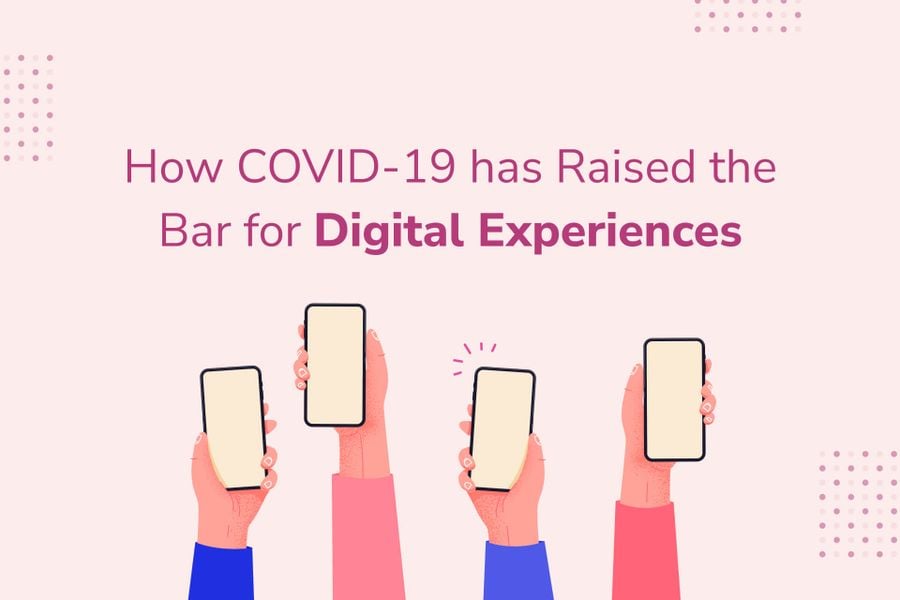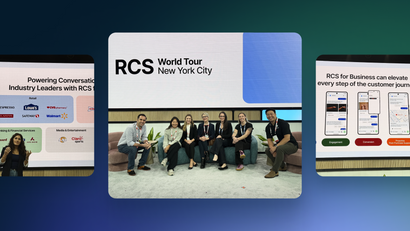COVID-19, or specifically shelter-in-place orders, forced a majority of the planet to stay physically distant, in their homes — a shift that has forever changed consumer behaviors. The most obvious change is the rapid adoption of new technology — skyrocketing usage of video, Facetime, Zoom, and Slack. However, it’s our collective comfort consuming digital entertainment, shopping online, ordering food, and accessing other services with our phones that will have the longest lasting implications.
Forrester predicts that more than 25 percent of all retail sales will occur online by 2024, but claims that total retail sales will fall 2.5 percent this year. That’s a huge shift to online sales — one that reflects changing consumer expectations. We now expect two-day delivery for goods and one-hour delivery for perishables such as groceries and takeout. Every food delivery platform offers live delivery updates, and we’re now increasingly comfortable video chatting with our physicians rather than risking an office visit. As digital adoption skyrockets in some industries, it unilaterally raises user expectation across the board. In short, we've started to expect our pharmacies to deliver prescriptions to our homes with the same transparency and speed as food delivery apps, and some pharmacies are beginning to comply.
With these sweeping changes — particularly how customers consume information, interact with technology, and how brands are perceived — companies need to improve their digital experiences in order to survive and compete.
Building a Compelling Digital Experience
With the current global health situation changing the way people interact, technology-driven methods of communication are now essential. Most businesses have been financially impacted by the pandemic, and thus will have to make tradeoffs. Mckinsey released a report last month revealing that companies that embed digital sales (e-commerce) into their marketing plan grow their revenue five times faster (compared to previous baseline), have 30 percent higher user acquisition efficiency, and reduce overhead costs. One of the critical factors behind this shift to digital sales is that businesses are re-thinking their investments. They continue to invest in user acquisition but they are also investing in their customer journey.
What is the customer journey? It is the digital “touchpoints” and process by which a consumer interacts with a business. For traditional businesses, these touchpoints occurred in a physical location such as a brick-and-mortar store or office. Now, the majority of these touchpoints occur in a digital environment.
In the past, a customer might see a TV advertisement or billboard for a QSR (quick-service restaurant) and visit the restaurant due to its proximity and convenience. Upon visiting the location, they would immediately build a relationship based on how the space looked, the menu options, prices, and how the staff made them feel. This (physical) experience of the space and community had a profound impact on whether or not they would recommend the restaurant to their family and friends or return in the future. Thanks to the rapid adoption of technology during the COVID pandemic, this QSR’s typical customer may build a relationship with the vendor without ever stepping foot inside the restaurant. Instead, their first interaction may occur over the restaurant’s website or a third-party delivery website. After placing their order online, they communicate with the restaurant and keep track of their order via push notifications, SMS, email, or all of the above.
In a world where digital experiences are sometimes the only experience a customer has with a brand, a core part of your retention strategy should be dedicated to retaining the customers you’ve already acquired, rather than spending more resources to earn new ones. To do so, you need to deliver a seamless digital experience so that each visitor continues to return — and provides greater lifetime value.
How Do You Increase Retention?
Invest in Creating More Digital Customer Touchpoints
This is easier to accomplish than you might think due to the creation of customer communication platforms. It’s astonishing how few businesses are using SMS, push notifications, and in-app messaging in their customer communication strategy. Customers today expect multichannel communication convenience. Maybe a few customers still enjoy getting physical mail — but the majority expect immediate gratification and want relevant and timely updates from companies.
The best part about SMS, push notifications, and email is that when a visitor grants you permission to communicate over these channels, they’re saying, I like your service, I want to stay connected. That’s an invaluable commitment — if you don’t offer different communication options to your customers, you may miss the opportunity to connect with them through their preferred medium.
Don’t Think of Each User as a “Transaction”
Once you’ve earned permission to message a user, you should think long-term about what that consumer expects in return for granting permission. As with in-person relationships, it’s important to deliver on the expectations you set in your initial interaction and communicate in a manner that demonstrates respect and fosters trust. If you blast users with generic, irrelevant messages, you’ll start to erode their trust, and those users who just opted-in to receive messages may choose to unsubscribe.
Demonstrate Value
How you demonstrate value should vary based on your business’ value proposition. Whereas a transactional relationship is focused on short-term rewards, a relational relationship is about long-term outlook. After you’ve earned a user’s permission to send an email, push notification, or SMS messages, take a high level of care when doing so and approach this relationship with a long-term lens. In other words, seek to provide value in return for their trust.
If you’re a media site selling a subscription, give users a free trial or reward them with access to a limited amount of content. Commerce businesses can provide an initial purchase discount or a mobile game credit to get a user started. Delivery businesses provide value with timely updates on delivery progress. The value doesn’t have to be significant or monetary — it just needs to be relevant to the circumstance of the value proposition you’re providing. Reduce the friction it takes to get a user to try your business and give more than you take from every engagement to win long-term loyalty.
A Relationship Is a Journey
There will be highs and lows in every relationship. Strive to delight by always working to improve. Jeff Bezos principles for e-commerce innovation are simple: offer low prices, fast delivery/convenience, and vast selection. Define your business principles, communicate them clearly, and focus on delivering against them each and every day.
The Takeaway
The years 2020 and 2021 will prove to be turning points on consumer adoption and reliance of digital experiences. Although growing a business may seem like a daunting task amidst a global pandemic, leveraging digital engagement tools to build a digital-friendly customer journey will help you build customer loyalty. The short-term costs of shifting towards digital engagement methods will pay off in the long-term by creating positive, relevant interactions between your businesses and your users. In fact, it’s these exact digital engagement strategies that will ultimately drive user retention and enhance the customer experience.
In addition to effecting consumer behavior and expectations, COVID-19 has also changed how companies express their values and adapt their messaging in challenging times. Check out the article below to discover our top messaging lessons learned from an unprecedented year in history.
Read: 3 Brand Communication Lessons from the COVID Pandemic



